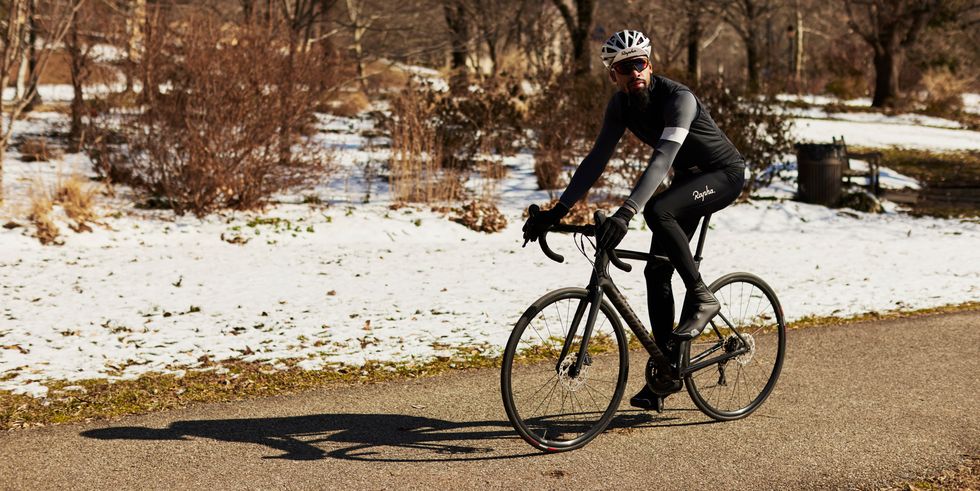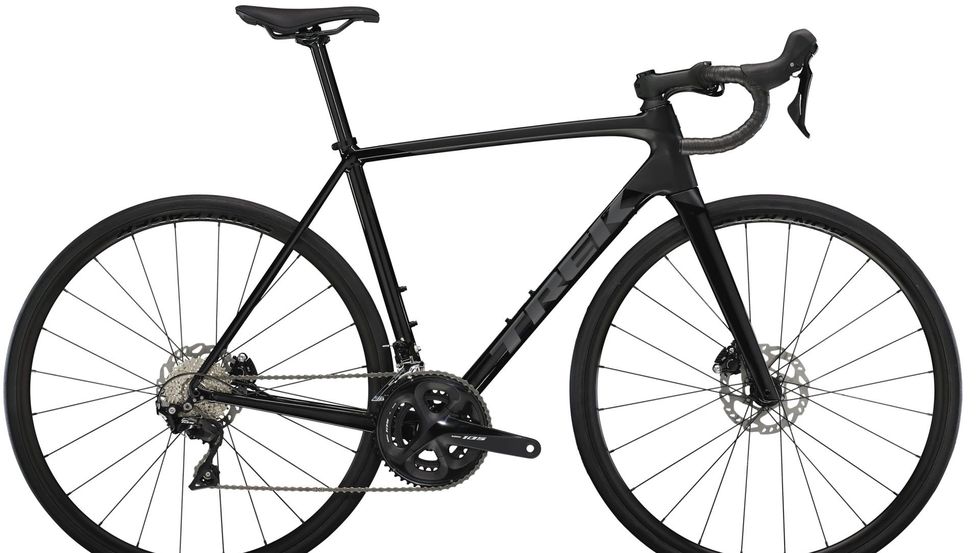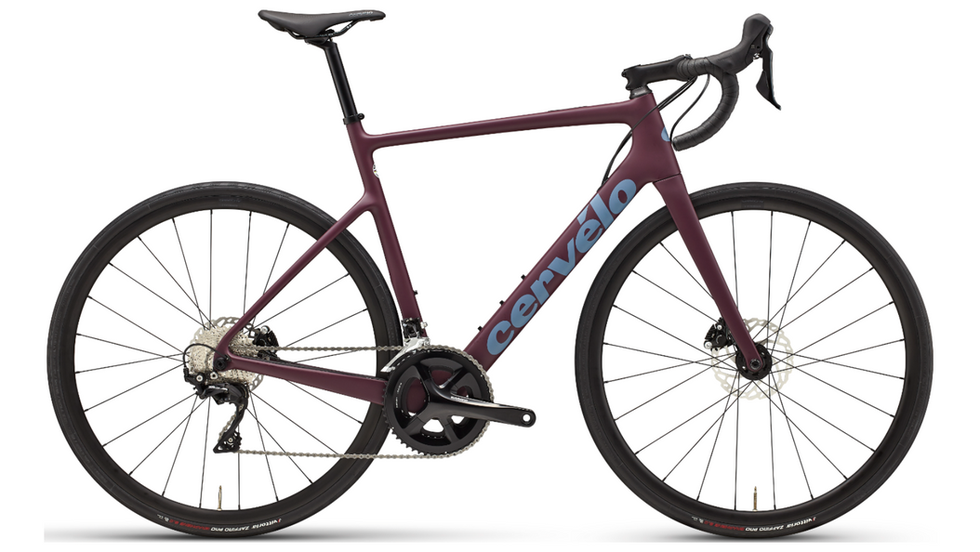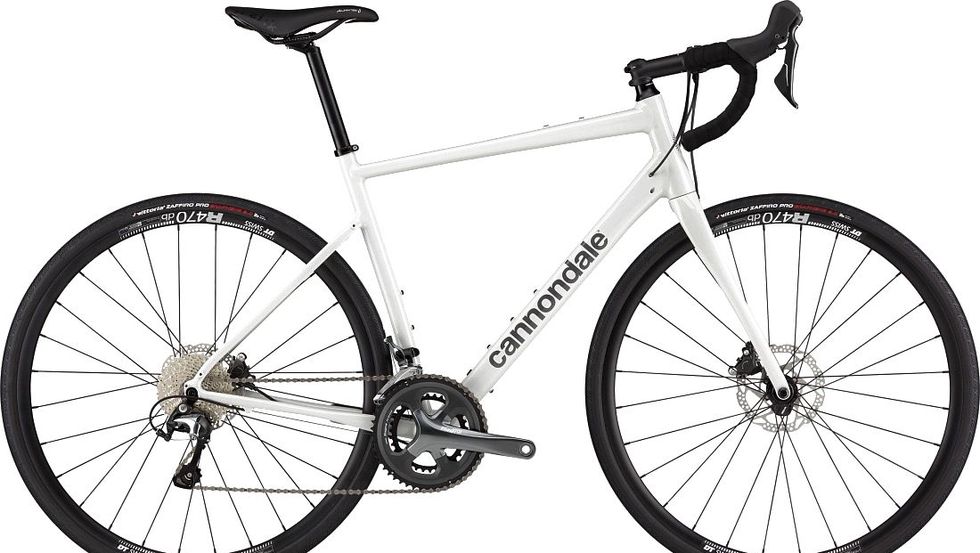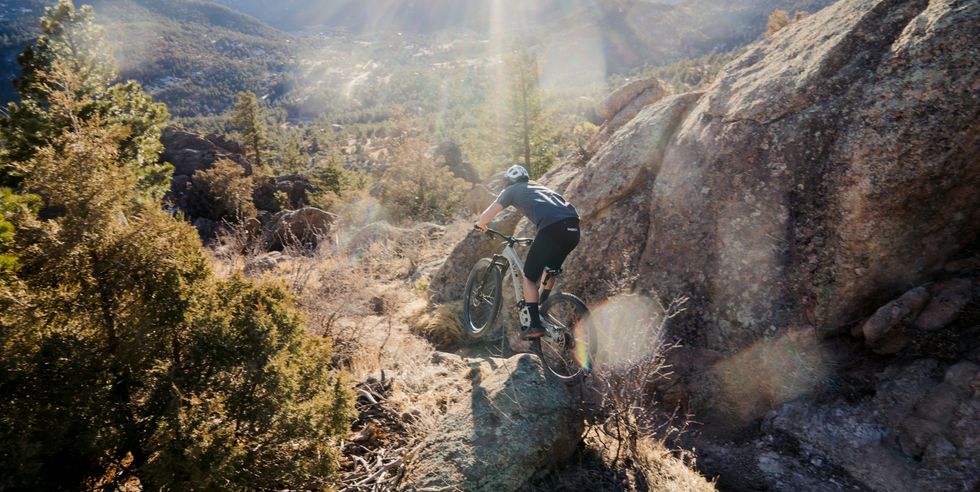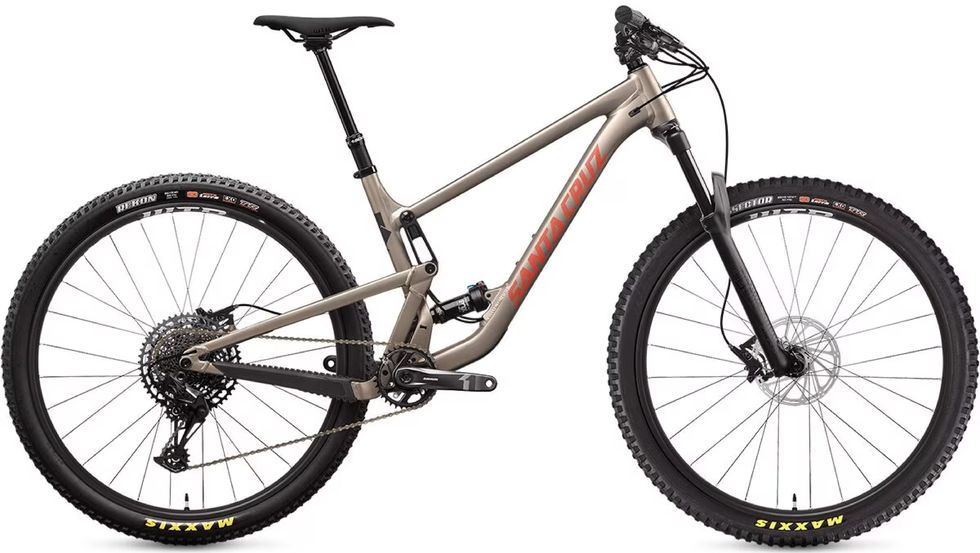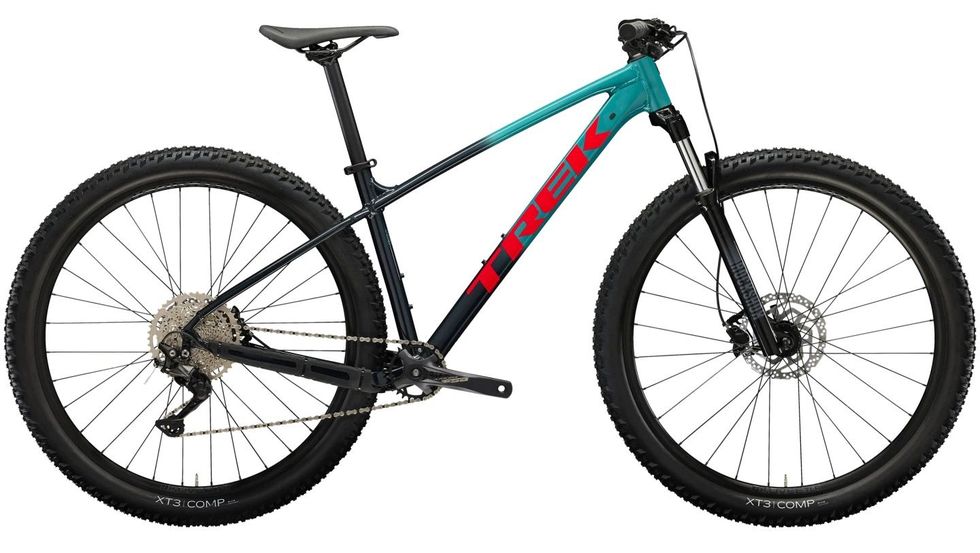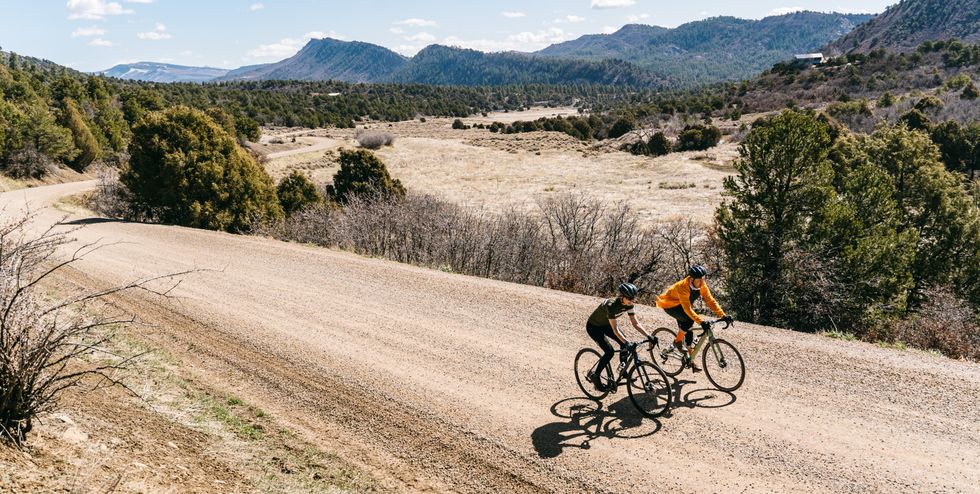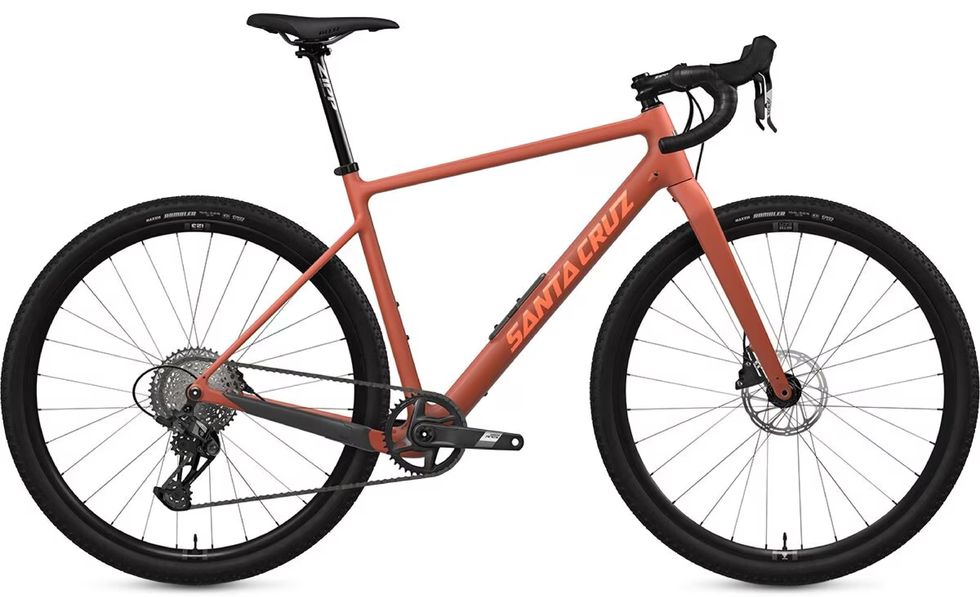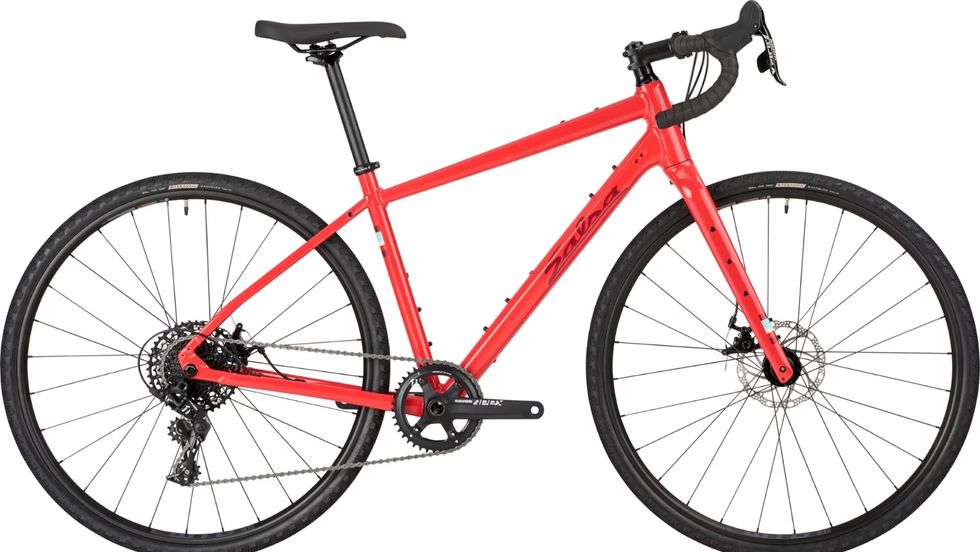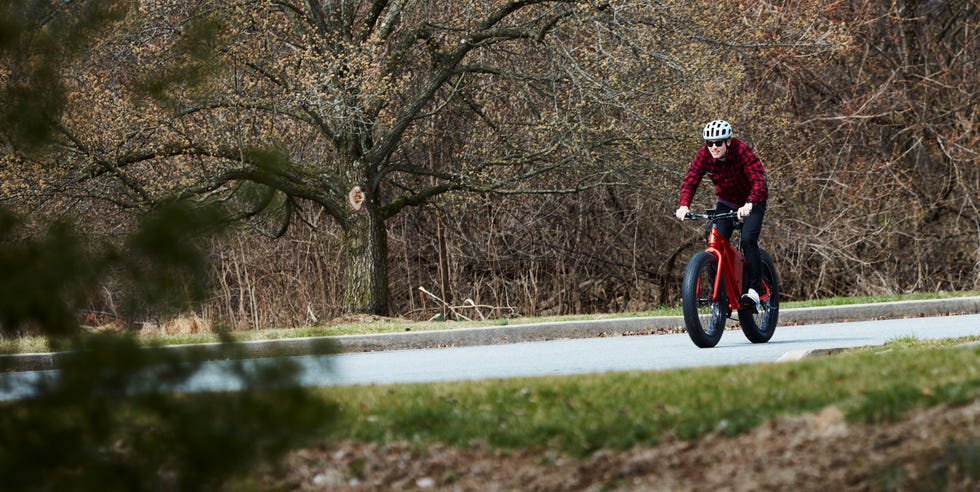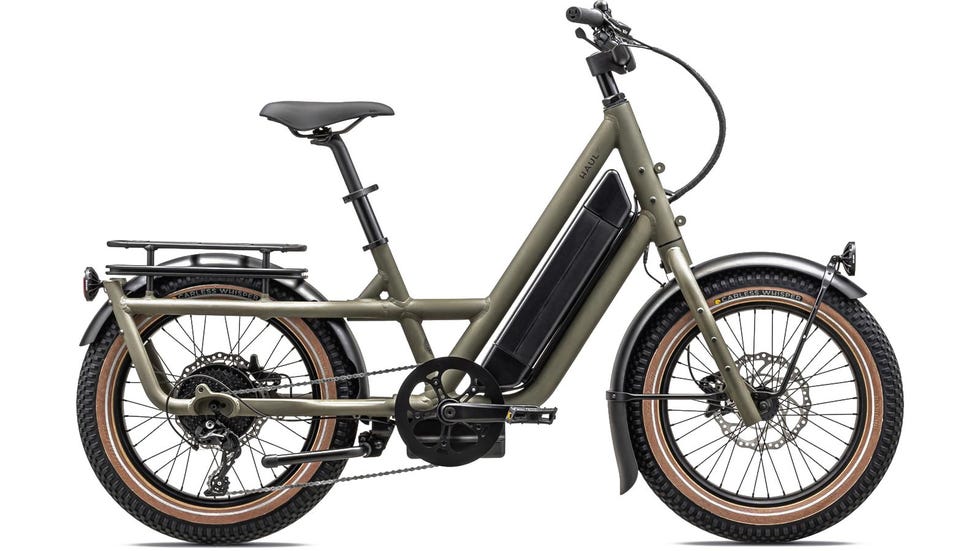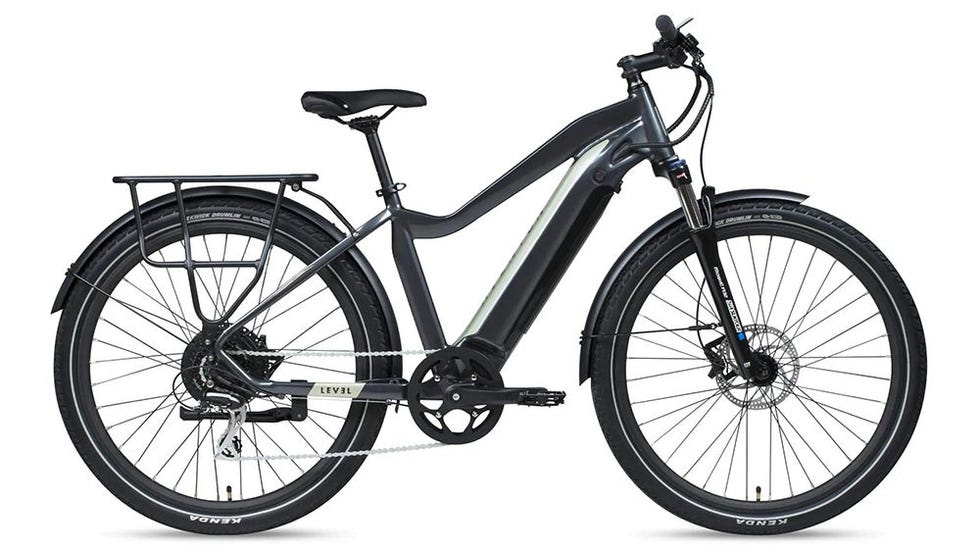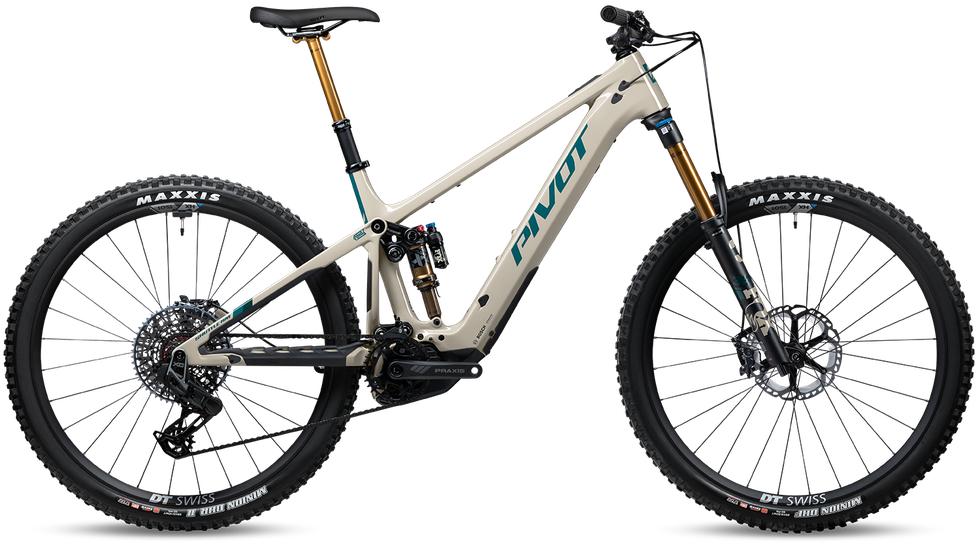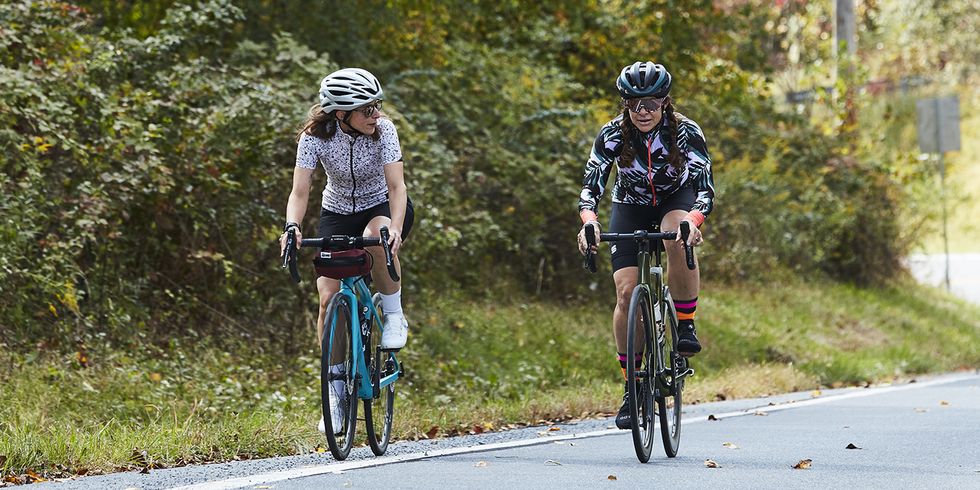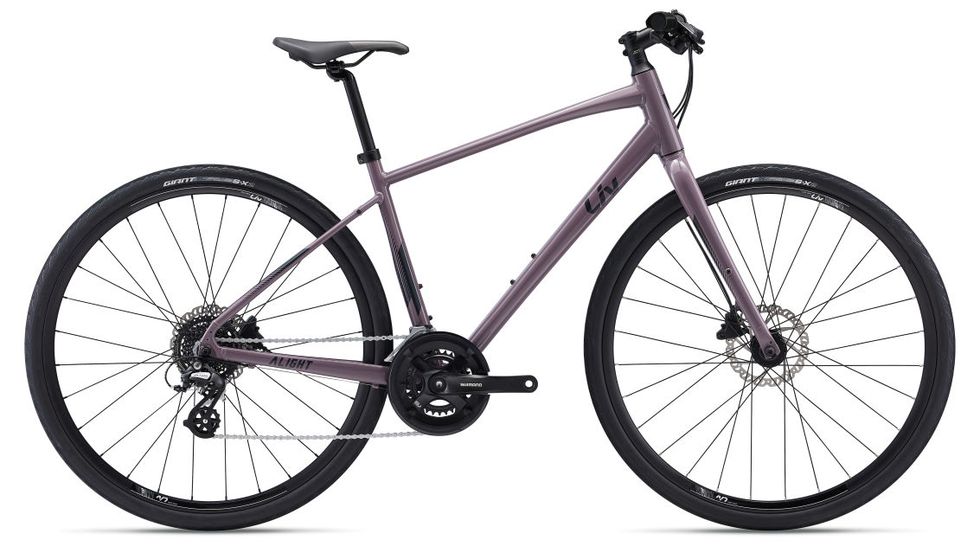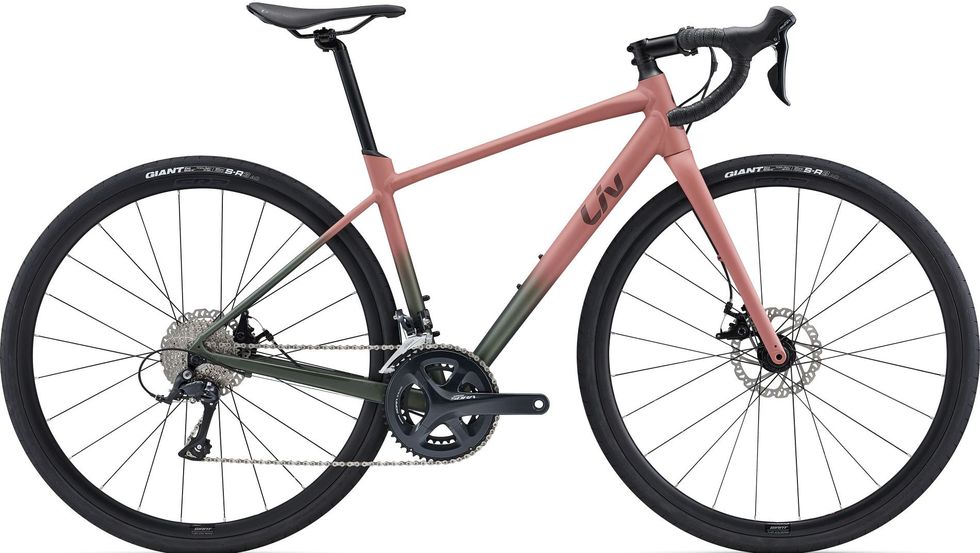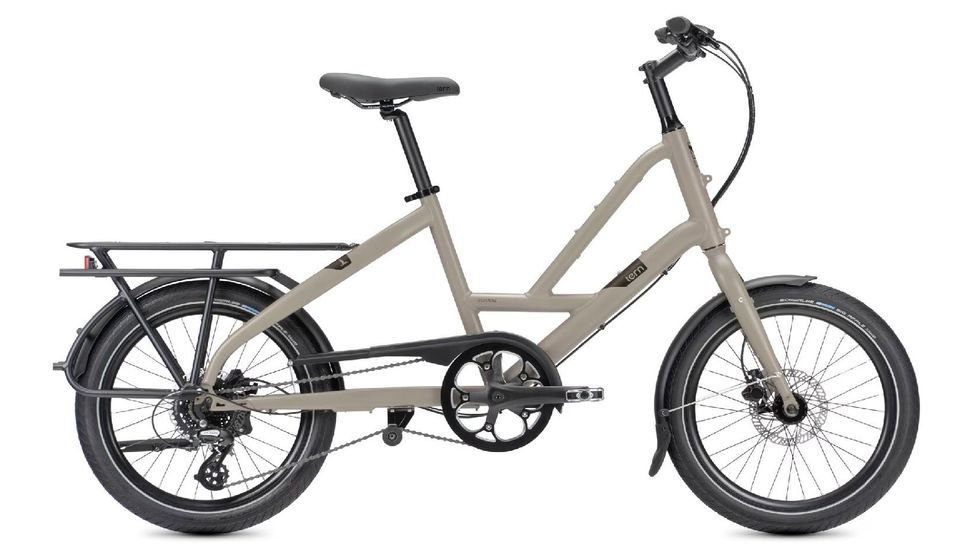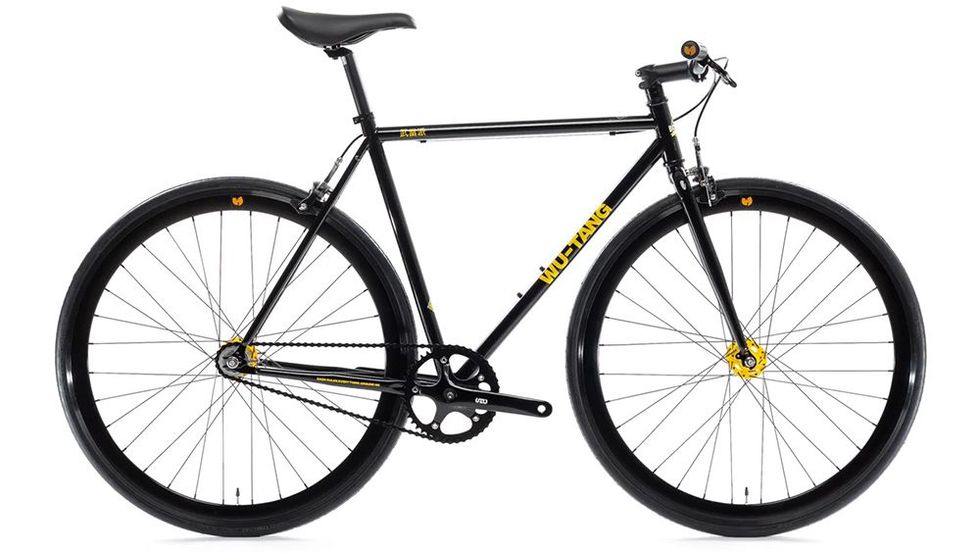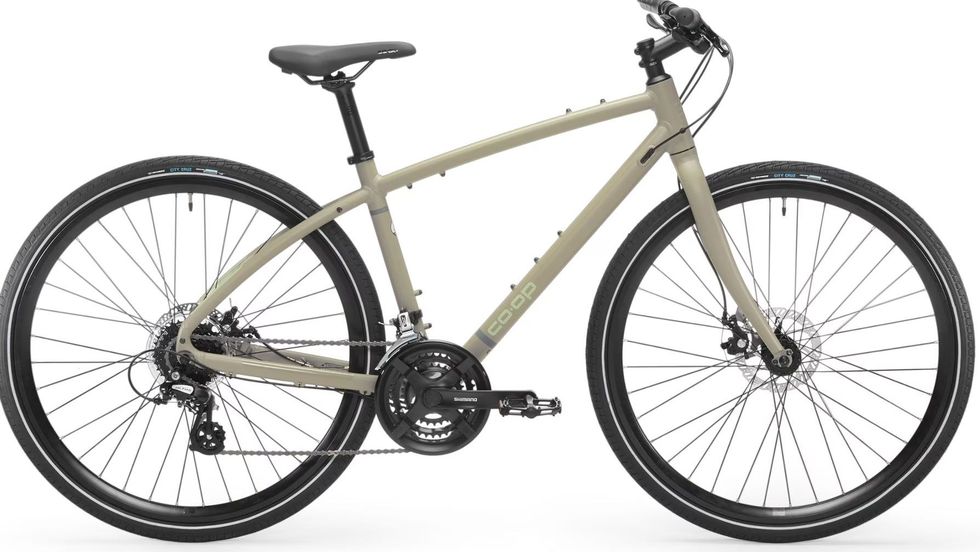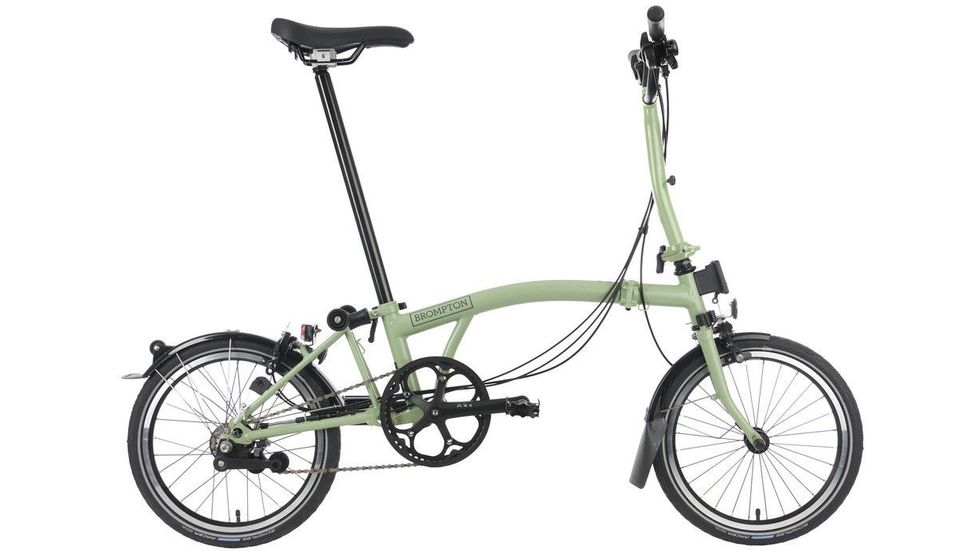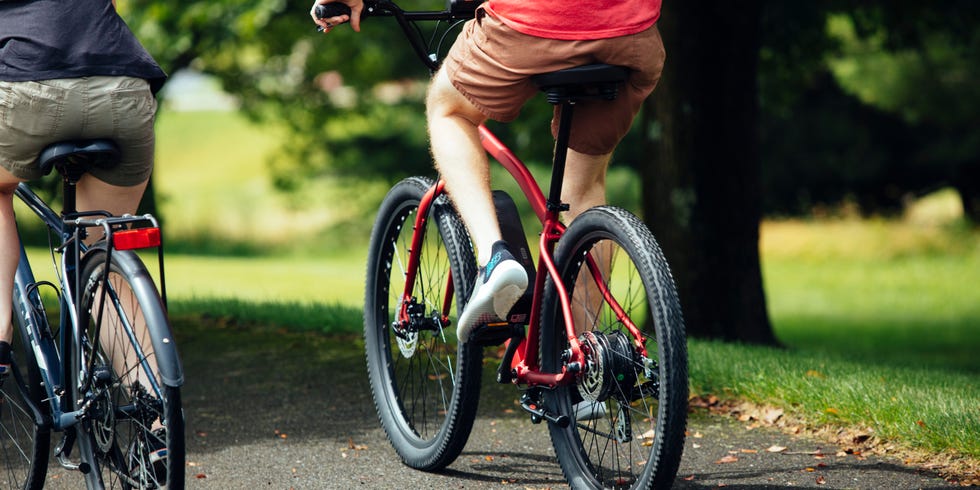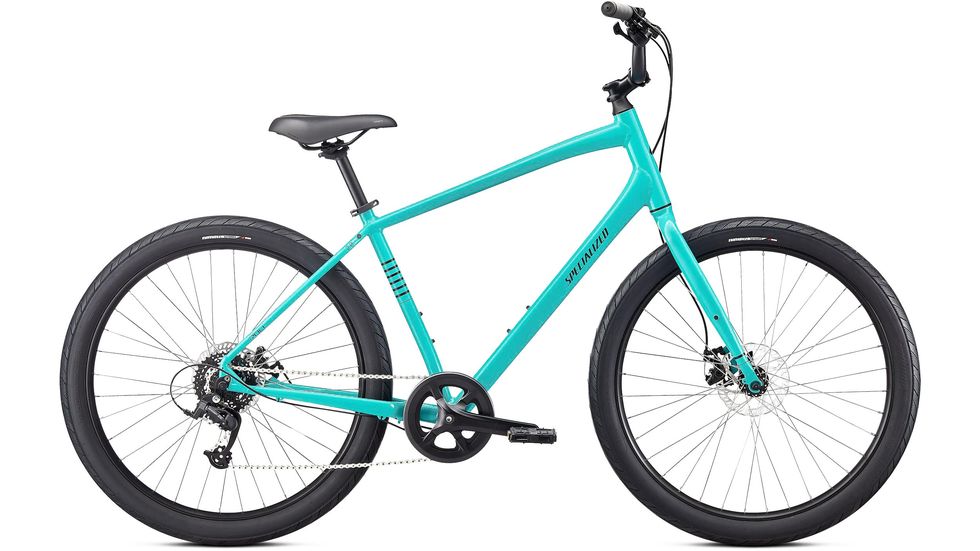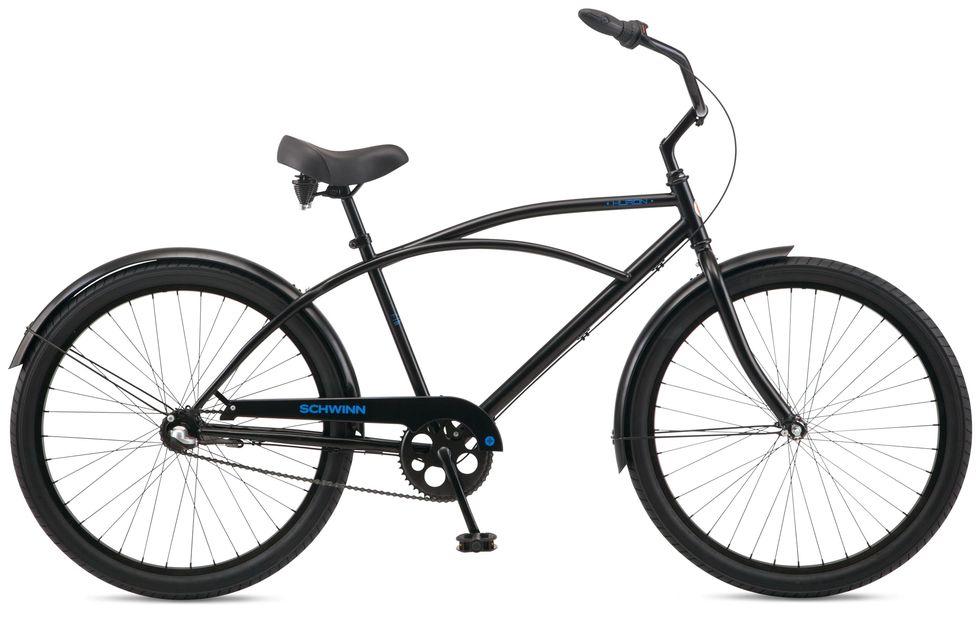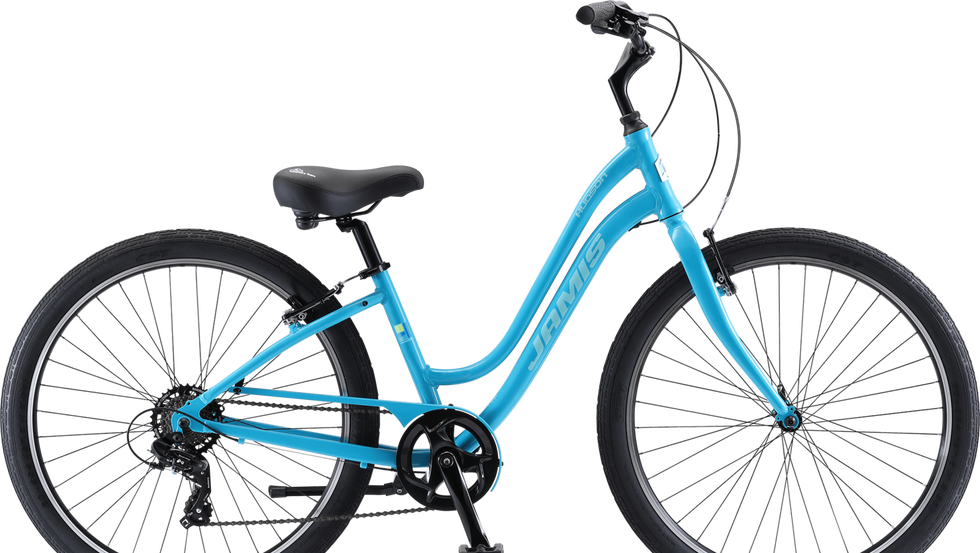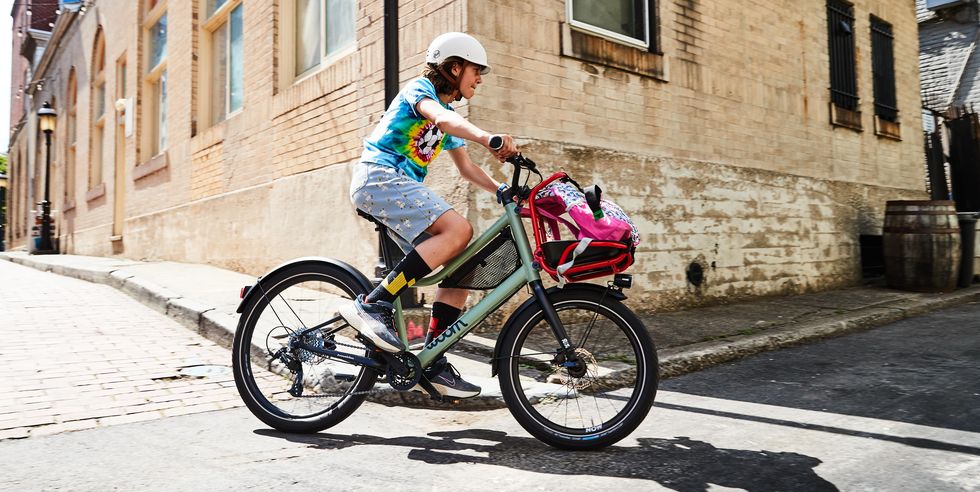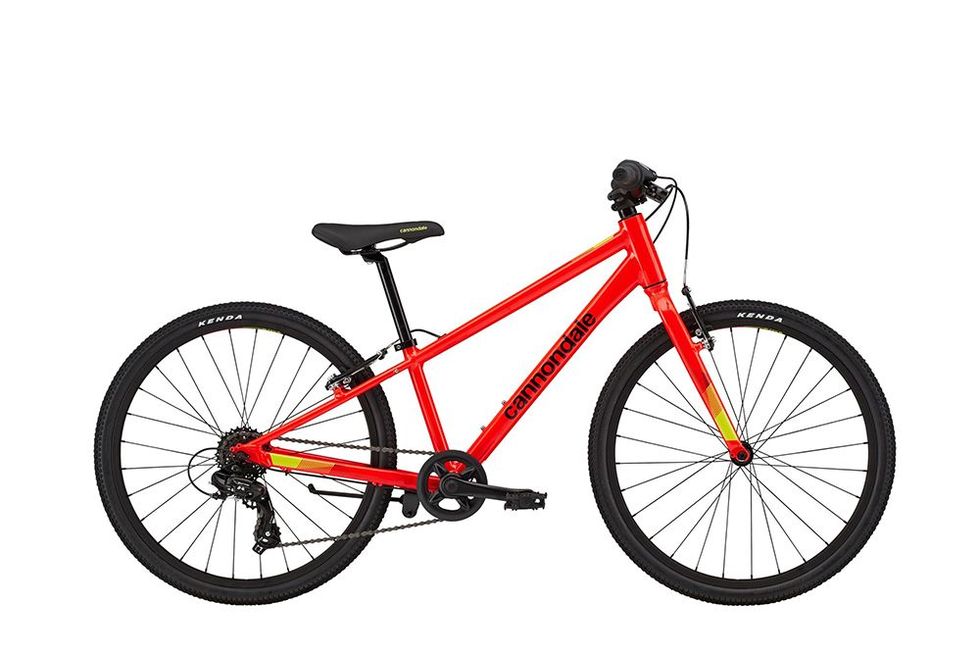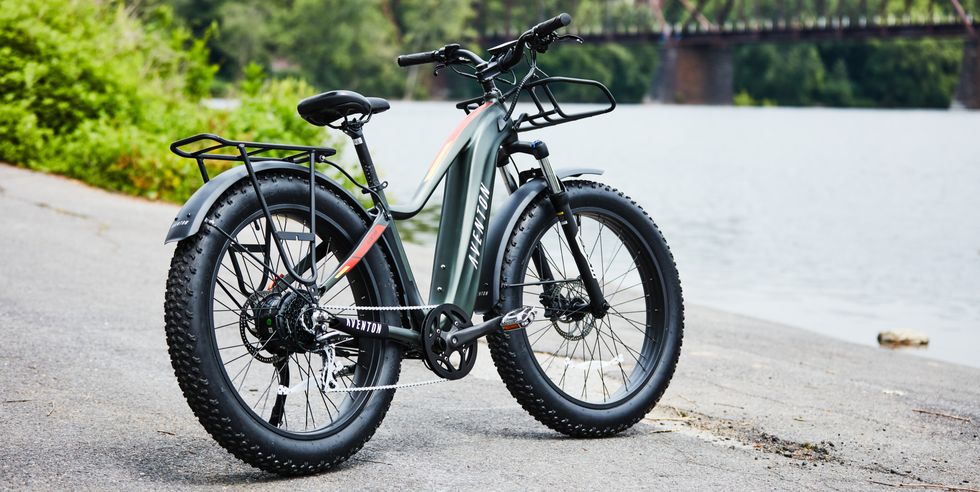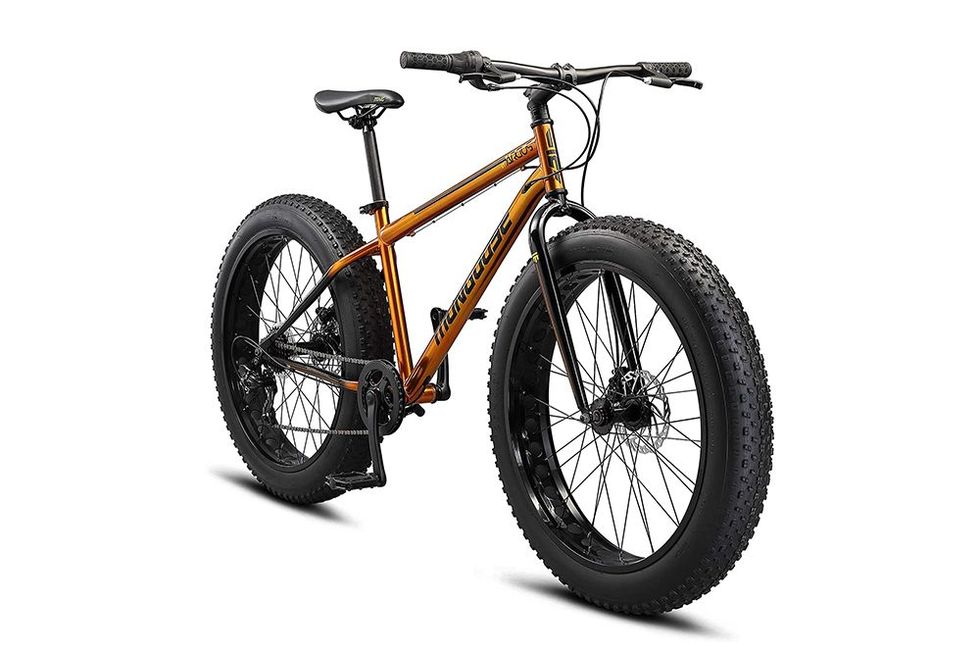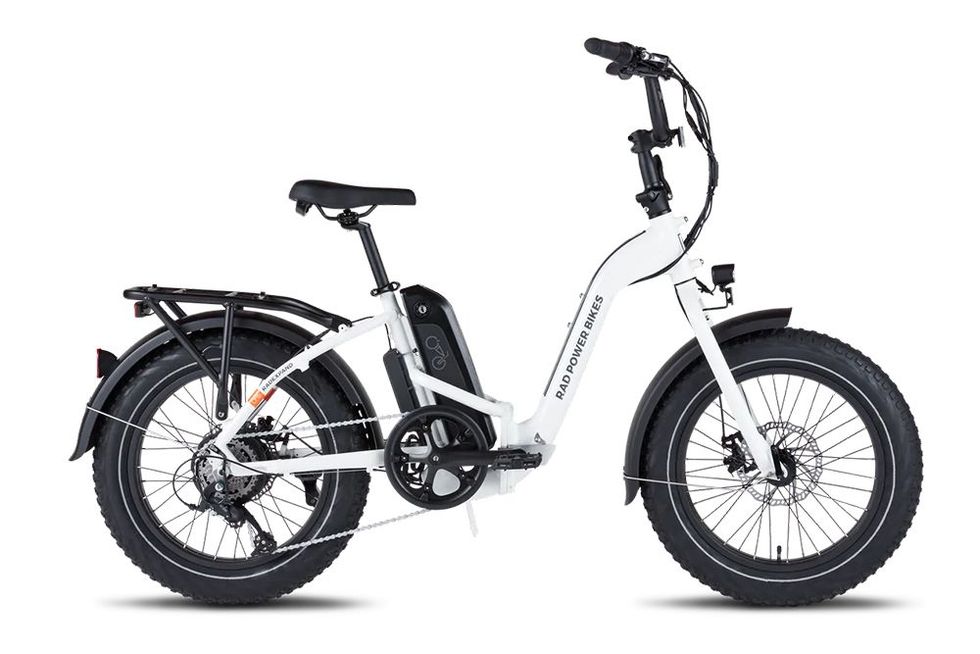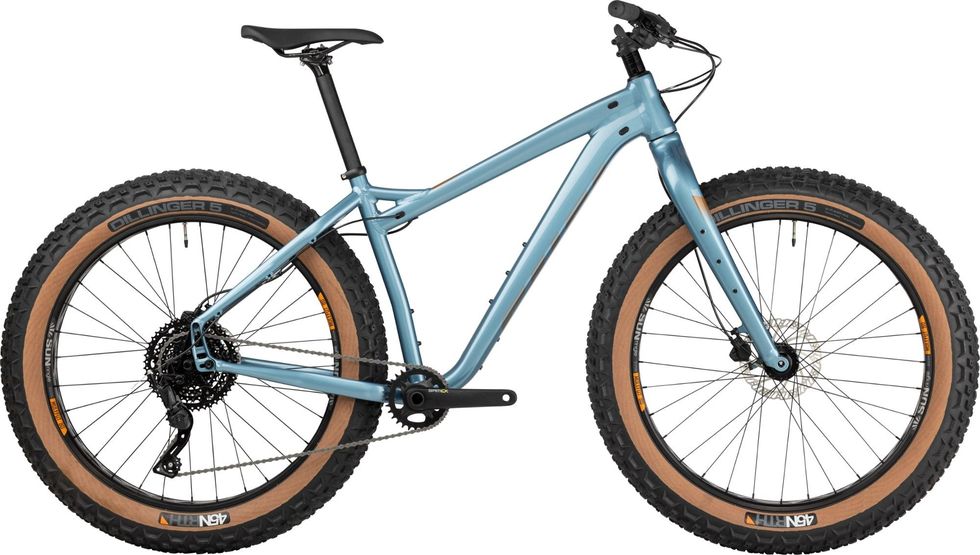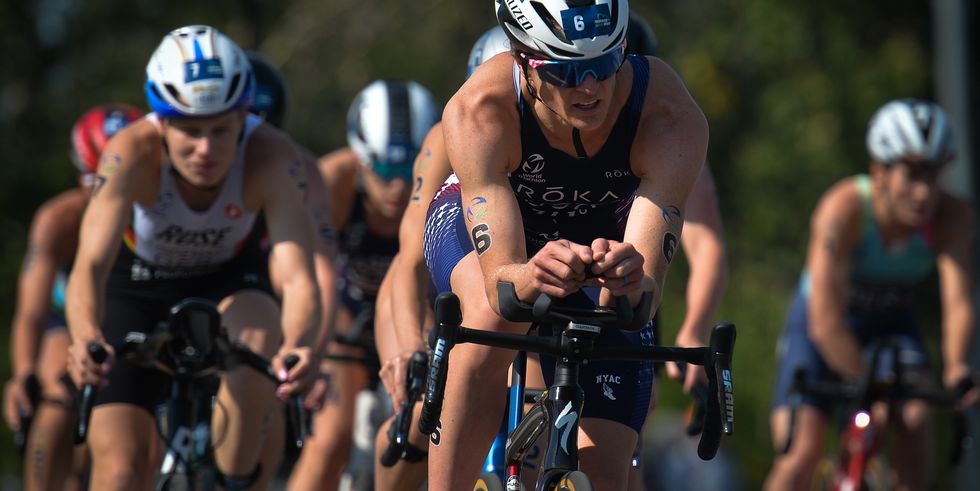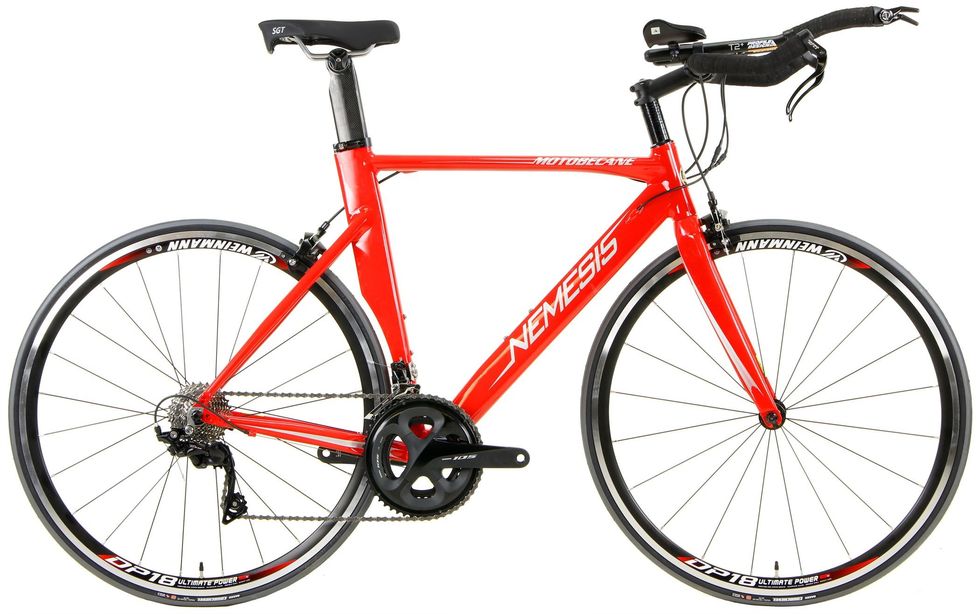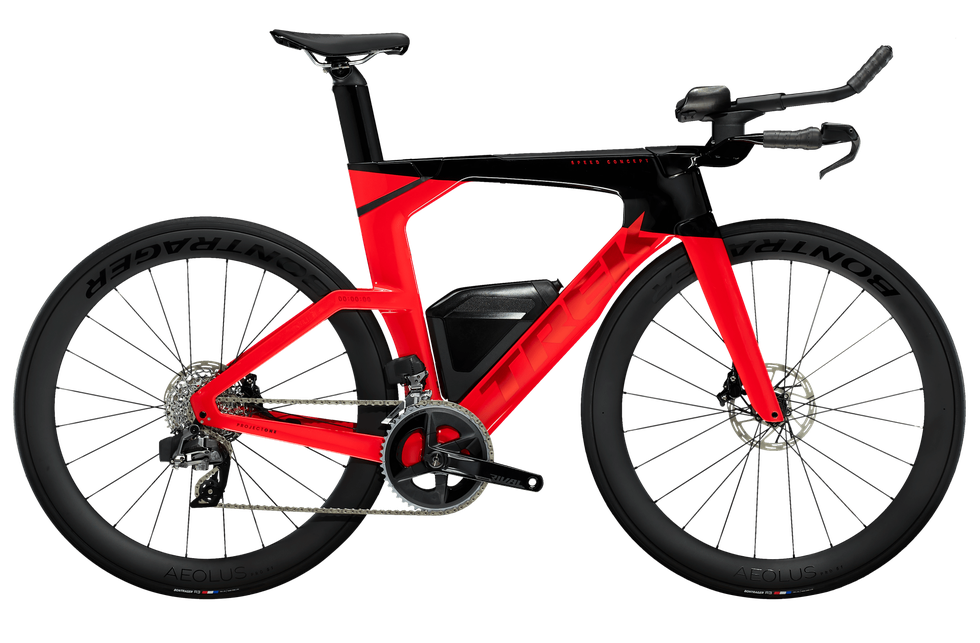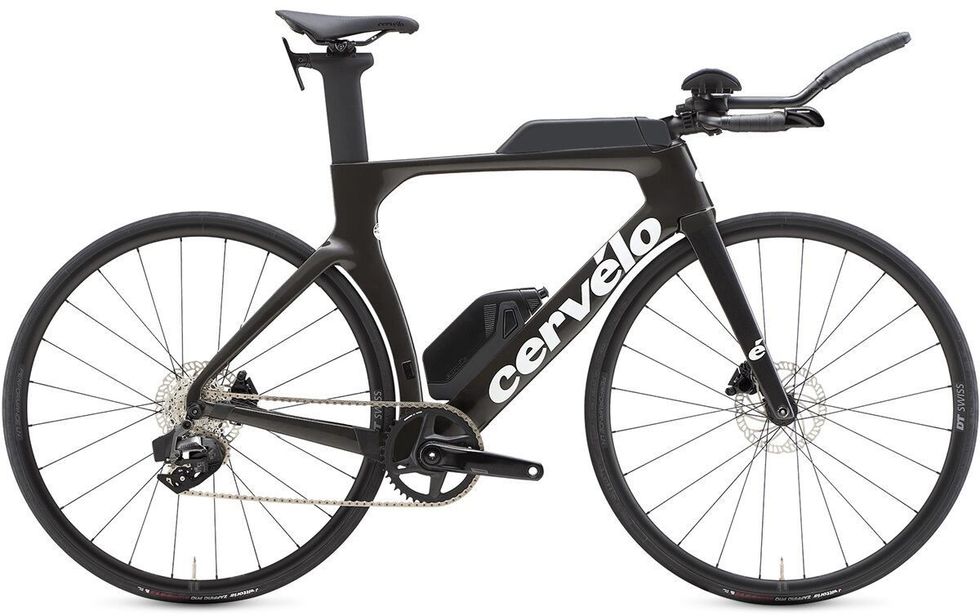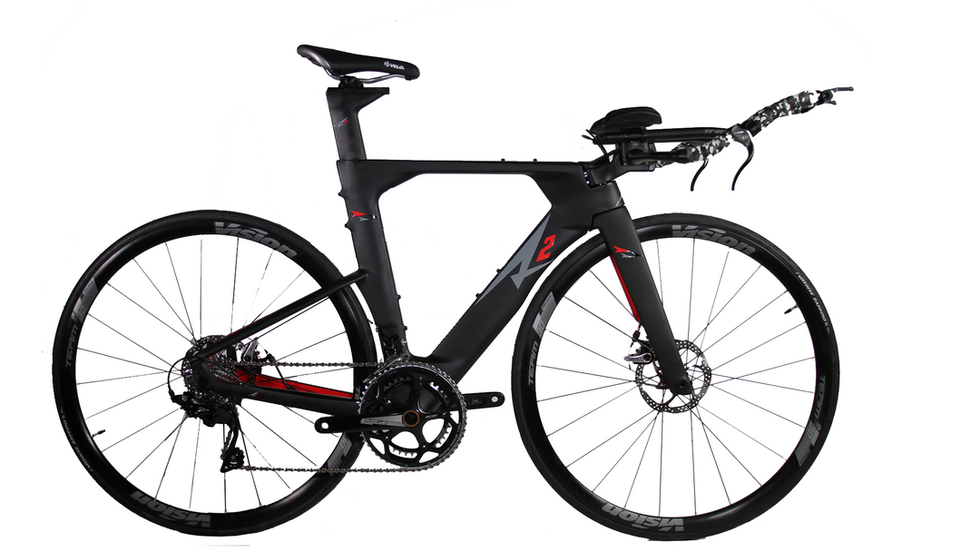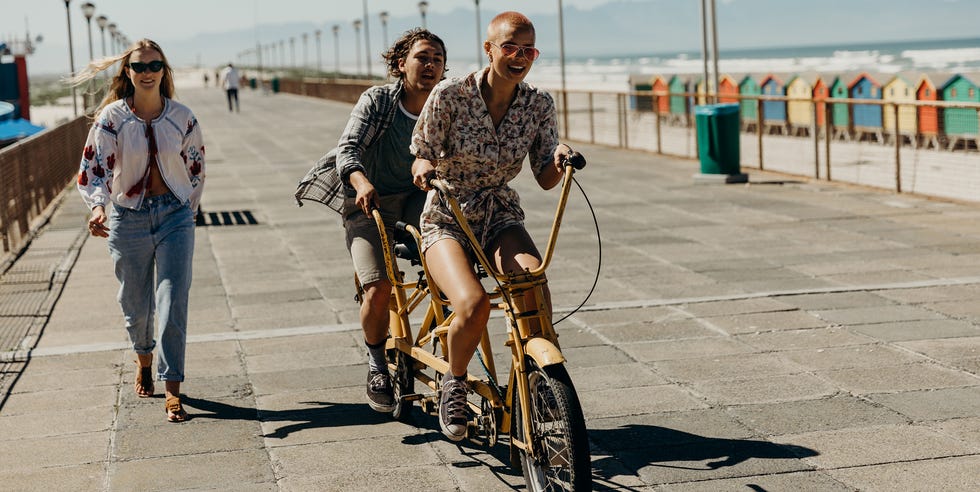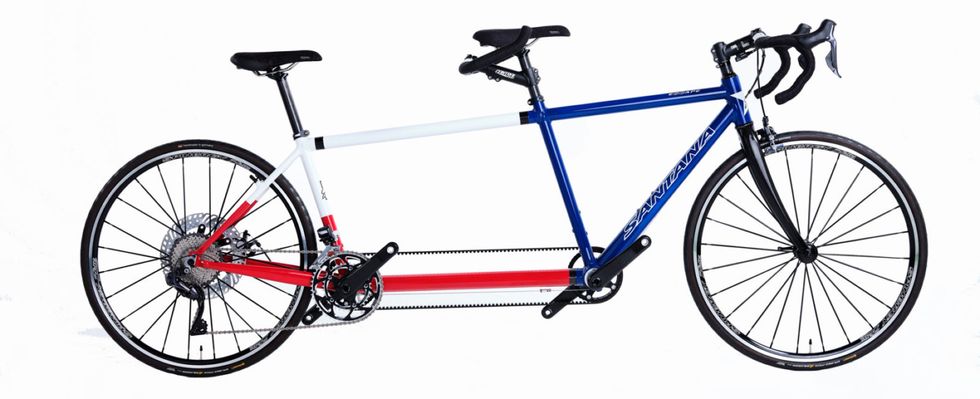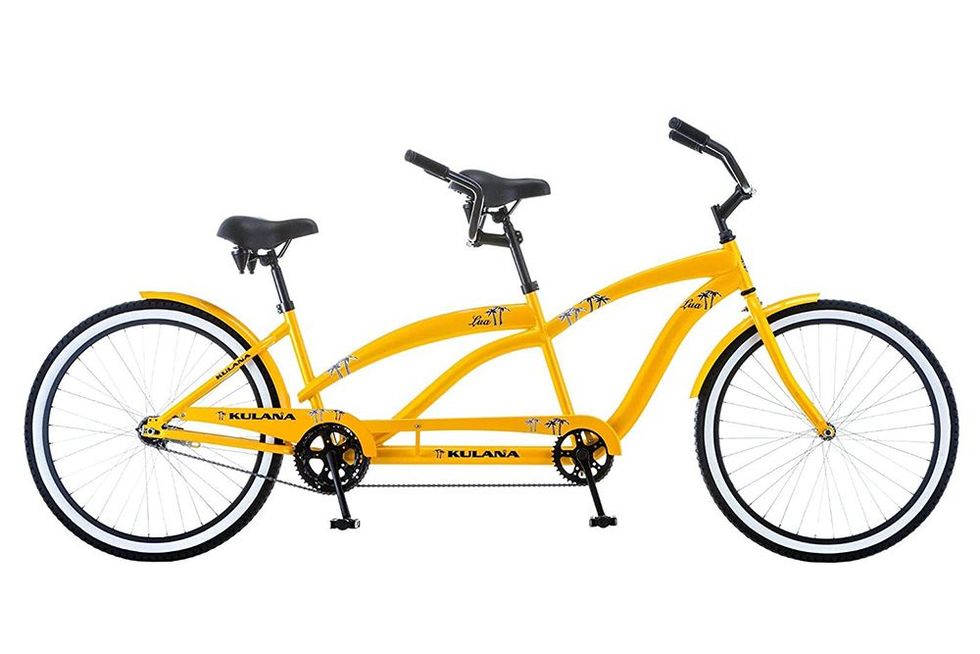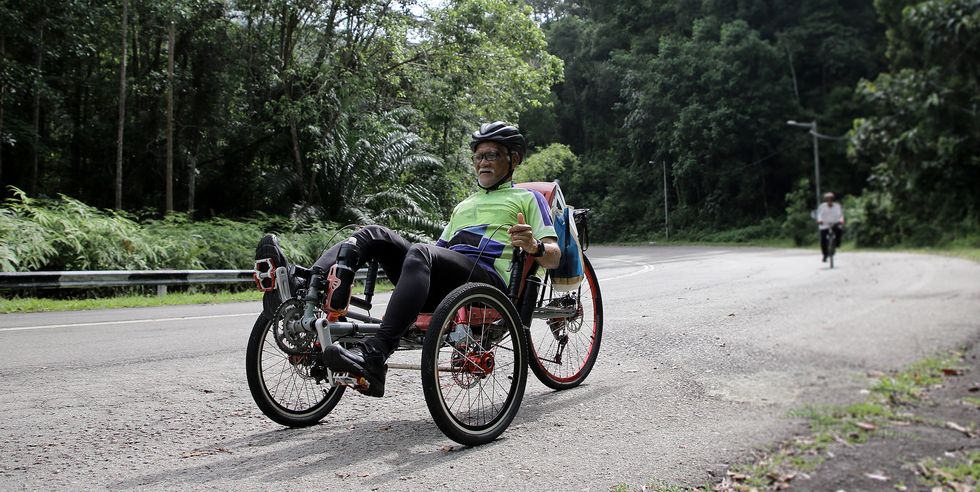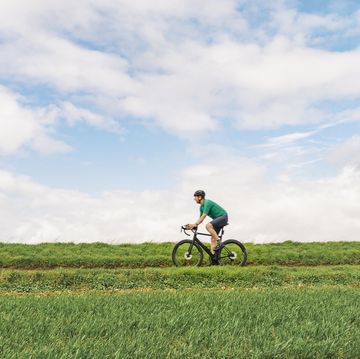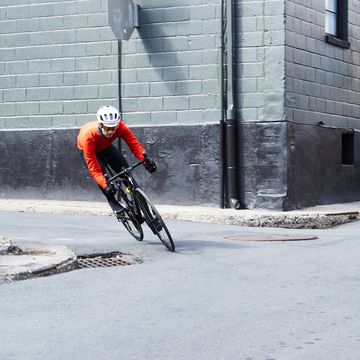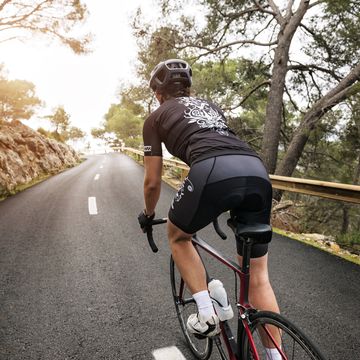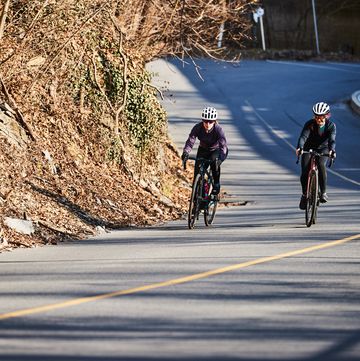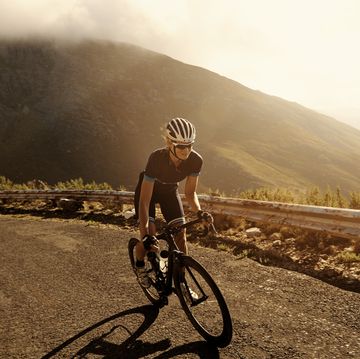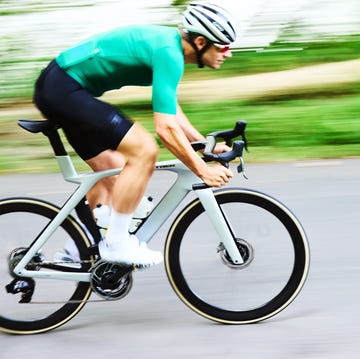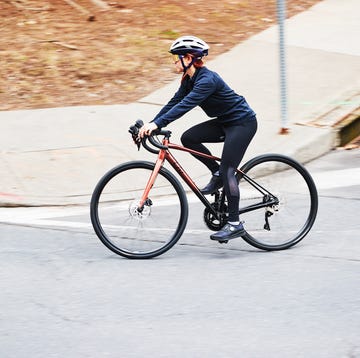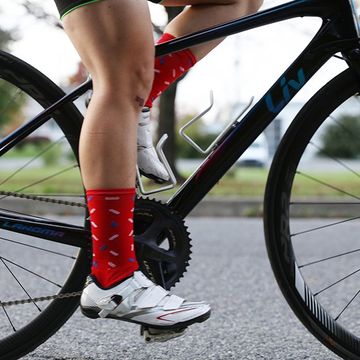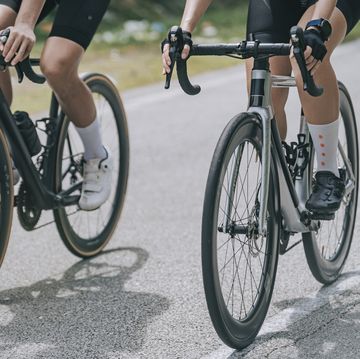There’s nothing better and more exciting than buying a new bike—and now is the perfect time to do so. With advances in technology and designers creating bikes with every kind of cyclist in mind, bikes have become more functional, reliable, and fun to ride. That’s partly because the variety has bloomed from a few basic styles (road, mountain, city) to include all manner of niches and categories within categories as bike makers diversify their offerings to appeal to the many ways people enjoy riding.
But that profusion of options presents you, the eager buyer, with a challenge: How do you know which type of bike is right for you and the riding you’ll do? Well, that’s what this guide is for whether you're an expert rider or you're looking for a beginner bike.
The Different Types of Bikes
Road Bike
What It Is:
Some people might call it a racing bike; others call it a 10-speed. (Hello, progress: Many now have 22 or more speeds!) Road bikes are designed for speed, with narrow tires for rolling fast and far on smoother surfaces.
Sub-Types of Road Bikes:
What It’s For:
If you’re staying on pavement, it’s hard to beat the fast-rolling efficiency of a good road bike. From racing to group rides to solo spins, a road bike can handle a wide range of recreational rides.
Price Range:
Quality road bikes with aluminum frames, 16-speed drivetrains, and conventional rim brakes start at around $800. Super high-end models go well north of $15,000, with exotic materials, 24-speed electronic drivetrains, hydraulic disc brakes, and ultra-low weights.
Mountain Bike
What It Is:
These durable, rugged bikes are made for riding narrow dirt trails. They have wide and flat handlebars for control, two-inch or wider tires with knobby tread for traction, and wide-range drivetrains and hydraulic disc brakes for handling steep climbs and descents. Most modern mountain bikes have 29-inch wheels, with the occasional model using 27.5-inch wheels (MX or Mullet bikes run a 29er in the front with a 27.5 in the rear). The older 26-inch is rapidly disappearing but is still used for some kids and dirt jump mountain bikes.
Sub-Types of Mountain Bikes:
What It’s For:
Mountain biking means a lot of things to a lot of people. Depending on the style, a mountain bike can be used for everything from unpaved roads to steep, goat-path singletrack. Generally, the more technical the trails, the more rear suspension you want. Smaller riders may benefit from bikes with the 27.5-inch wheel size.
Price Range:
A basic hardtail for light trail use can be as low as $500, while the top trail and enduro-style models cost $10,000 or more, with carbon fiber frames, carbon wheelsets and sophisticated suspension systems.
Gravel/Adventure Bike
What It Is:
With a classic drop handlebar, a gravel/adventure bike looks almost exactly like a traditional road bike. But look closer, and you’ll find differences like clearance for much larger, knobby tires for off-road use, additional mounts for accessories like bottle cages and frame bags, and geometry that’s designed for a more upright rider position for comfort and stable handling on unpaved surfaces. These bikes have disc brakes and wide-range gearing for steep climbs. Some incorporate front or rear suspension elements for rider comfort.
Sub-Types of Gravel/Adventure Bikes:
What It’s For:
These go-anywhere, ride-anything machines are the most versatile bikes on the market today. They combine much of the fast-rolling efficiency of a road bike with treaded tires for traction off-pavement use. They can handle almost any kind of riding you want to do except for road races. Some models have rack and fender eyelets, making them serviceable tourers and commuters.
Price Range:
Gravel/adventure bikes start around $1,000 for basic, aluminum-framed models with cable-activated disc brakes. They can exceed $10,000 for carbon fiber versions that are often as light as good road bikes and have upgrades like carbon fiber wheels and electronic shifting.
E-Bike
What It Is:
The “e” stands for a small electric motor that assists the rider’s pedaling effort. There are three classes: Class 1: pedal-assist to 20 mph; Class 2: pedal-assist or throttle-driven to 20 mph; and Class 3: pedal-assist to 28 mph. Once found mostly on urban bikes, you can find electric bikes now across almost all kinds of bikes.
Sub-Types of E-Bikes:
What It’s For:
The point of an e-bike is to deliver the cycling experience with a little less effort. E-bikes can help people enjoy the same kind of road or mountain bike rides regardless of differences in age or fitness, give your commute a speedy boost with less sweat, or make the difference between using the car or the cargo bike for that grocery run. Basically, e-bikes allow more people more access to ride.
Price Range:
Hub-driven technology can be found on bikes down to $1,000. Newer “mid-drive” systems are found on bikes starting around $2,000. A typical price range is $1,500-$6,000, and high-end full-suspension E-MTBs can exceed $12,000.
Women’s Bike
In the recent past, many companies offered “women’s specific bikes.” These could be bikes with geometry and parts chosen specifically for what was understood to be anthropomorphic differences between men and women, or they might be “shrink it and pink it”—a small frame size in a “feminine” color.
But today, far fewer bikes are designated as women’s specific. This is largely because, according to brands, the body proportion studies that were the basis of women’s specific geometries are no longer considered accurate.
Today, the only full-line brand offering women’s specific bikes with unique geometries is Liv.
Utility Bike
What It Is:
These bikes defy easy classification: They are essentially any bike made with utility, rather than recreation, in mind. They come in various, purpose-built styles. Whatever bike you pick, you get exercise, stuff gets done, and you always get free parking. You’ll find traditional “diamond” frame and step-through models in all styles except fixed gear (fixie) for anyone who wants an easier way to get on the bike.
Sub-Types of Urban Bikes:
What It’s For:
There’s no one “best” kind of urban bike; just the right kind of bike for your needs, which can range from commuting and errands to taking kids to the park or trips to the home and garden store.
Price Range:
Fixies and commuters are typically the most affordable. They start around $400 for the most basic models; high-end, fully accessorized commuters can run $2,000. Cargo bikes start around $1,500 for serviceable mid-tail designs and go well past $5,000 for electric versions.
Comfort/Fitness Bike
What It Is:
If it’s a bike built for fun—but not a road or mountain bike—it’s probably in this broad category that encompasses everything from flat-bar fitness bikes to beach cruisers. Some fitness bikes come in women’s versions with different touchpoints, and you’ll also find traditional diamond-frame and step-through versions in styles like hybrid, comfort, and cruiser.
Sub-Types of Comfort/Fitness Bikes:
What It’s For:
As with urban, this category covers a broad range of uses, and you’ll want to pick your style based on what you’ll do with it. Fitness bikes are made for working out; hybrids are great for rambles on paved or light-duty dirt paths; comfort is perfect for a refreshing Saturday morning spin to the coffee shop.
Price Range:
Basic cruisers can go for as little as $200, while high-end flat-bar fitness bikes can easily run $2,000.
Track Bike
What It Is:
The purest distillation of a bicycle, track bikes are all business: one gear, no brakes, and made for racing. Track bikes are meant to be used on a velodrome—a closed, oval track with banked turns expressly made for bike racing. Track bikes feature a single gear that does not freewheel; the gear is used both to propel the bike and to slow it down (via back pressure), and there are no brakes. They roll on narrow tires inflated to very high pressure for low rolling resistance. These bikes are sometimes used on the road as urban bikes, where they’re called fixies and often outfitted with flat handlebars and, sometimes, a brake of some kind. But a true track bike isn’t even drilled to accept bolt-on brakes. Wheels can be anything from conventional metal hub-spoke-rim constructions to carbon-fiber multispoke and disc versions.
Sub-Types of Track Bikes:
What It’s For:
While track-style bikes (fixies) have become popular as urban rides, the true purpose of a track bike is very narrow–riding and racing on velodromes.
Price Range:
Because there’s not much to them, track bikes can be quite affordable. For actual track racing, level up a bit from the wide array of inexpensive metal “fixies” (which are often just road-style frames with track parts) to something specifically designed for velodrome racing. Basic track models with metal frames and conventional wheels can be had for around $500, but sprint and pursuit models can easily cost $5,000, in part because they’re not widely mass-produced. The craziest are the models designed for and raced by national Olympic teams; because of UCI rules, any bike used in competition must be available to the public, but these are often priced so high that it’s almost unheard of for a sale to happen. Hope’s HB.T, raced by the British Olympic team, starts at £15,550 (about $19,500 at current exchange rates) for the frameset alone, while Felt’s TA FRD, raced exclusively by the U.S. Olympic team at the 2016 Olympics, is $26,000. At least that gets you the complete bike.
Kid’s Bike
What It Is:
For decades, kids’ bikes were typically cheap, heavy, BMX-style models, but in the past 10 or so years, specialty bike makers have rethought the approach, and the result is a major change in the quality and variety of children’s bikes. The downside? Yes, you’ll pay more. But in return, you’ll get nicer bikes that are lighter, with parts that are appropriately sized for kids, and which hold their value—some manufacturers even offer an upgrade program with guaranteed buyback value.
There are various sub-types, but in general, look for lightweight overall, smaller parts, and quality components. Weight matters because, proportionately, a bike is heavier to kids than to adults. How tired would you get if you had to hustle a 60- to 70-pound bike up a hill? That’s what a 25-pound bike feels like to a 60-pound kiddo. Parts like brake levers, crankarms, and pedals should be appropriately shrunk to fit kids’ bodies. And watch for signs of good quality: name-brand tires and drivetrain parts, plus brakes with short-reach levers that operate with minimal hand force.
Sub-Types of Kid's Bikes:
What It’s For:
For kids, of course. They serve various purposes, and those will change as your child grows and decides what’s important. But overall, these are bikes that will help grow a love of cycling in your little one, whatever the style.
Price Range:
Costs vary widely depending on the bike. You can find balance bikes for toddlers for under $100, while more sport-specific models, like mountain bikes, with high-end parts and features can be $2,000. Rest assured you don’t need to spend that much, though many quality kids’ bikes, even for bigger riders, are between $500 and $1,000. Quality bikes tend to offer better resale value; be sure to ask about shop or manufacturer-sponsored buyback programs to help your dollar go further.
Fat Bike
What It Is:
Fat bikes feature ultra-wide tires—at least 3.8 to almost 5 inches wide—for better flotation and traction, especially in soft soils or packed snow.
Sub-Types of Fat Bikes:
What It’s For:
Mountain fat bikes are great for getting out on days you might not otherwise, especially in winter. They’re ideal for hardpacked snow, as well as sand and loose soils. They offer confidence and control for getting over obstacles without losing traction. The beach cruiser variety? Those are just fun.
Price Range:
Beach cruiser-style bikes start around $500. Hardtail mountain bikes typically start around $1,400. High-end versions, with carbon fiber frames and rims to keep weight down, can go for $7,000.
Triathlon Bike
What It Is:
A road-style bike that’s built for aerodynamic efficiency to help triathletes achieve their best performances. The central features of a triathlon bike are frame geometry and special handlebars that allow the rider to maintain an aerodynamic tuck while preserving stable handling; and aerodynamic frame and component design for reducing drag. Frames and wheels, especially, are designed with wing-style airfoil shapes for aerodynamic efficiency. At the high end, bikes are designed as complete, custom-integrated units; parts are not easily swapped. Disc brakes are becoming more common, but adoption here still lags behind other road styles. Tires are typically narrow (25mm or less). Some companies offer women’s-specific models, with different saddle and handlebars, shorter crankarms, and, sometimes, different frame geometry.
What It’s For:
Going fast on race day. Drafting behind other riders is not legal in most triathlons, so the bikes are optimized to reduce wind drag, and to go fast over the flat to rolling terrain found on most triathlon bike courses. They’re not as versatile as road bikes; the rider position and handling aren’t suited to long climbs or technical, twisty descents.
Price Range:
Basic triathlon bikes start around $2,000, with metal frames with less aerodynamic shaping, and more conventional wheels. Top-shelf models feature carbon frames with striking wing-shape tube profiles, carbon fiber wheels with deep aero rims, and advances like electronic shifting with multiple shifter points on different parts of the handlebar. These can run well over $10,000.
Tandem Bike
What It Is:
Simply, a bike made to carry two riders. To handle the extra weight and long wheelbase, the frames are built from oversized tubing and often feature a second downtube that bisects the bike to add stiffness. Crucial parts like wheels and tires are typically built for strength and durability as well. Pay special attention to the brakes; you’ll want powerful versions for sure, safe stopping (discs are best). Some production manufacturers make tandem bikes, but they’re also popular items from custom frame builders.
Sub-Types of Tandem Bikes:
What It’s For:
Tandems are popular because they allow riders of different abilities to work together and enjoy a ride. They’re particularly suited for riding with children, and riders with certain disabilities, like impaired vision. They require excellent communication between the riders. The pilot has to look for and anticipate changes in terrain and let the stoker know when to pedal, coast, and stand, as well as sudden turns that shift weight.
Price Range:
Simple tandem cruisers can be found for as little as $500, but may not feature appropriate brakes. Tandems are typically more expensive than their single-rider brethren, and prices for performance road and mountain models can easily surpass $6,000.
BMX
What It Is:
Short for “bicycle motocross” BMX bikes were created in the early 1970s for racing on motocross-style courses. As the sport exploded in popularity, freestyle bikes designed for riding on ramps and dirt jumps or doing tricks on streets and in skateparks emerged. BMX riding has a strong and established subculture.
Sub-Types of BMX Bikes:
What It’s For:
Jumping and racing. BMX race models are intended for head-to-head competitions. But all of these excel at catching air on heavily groomed jumps in specific settings—BMX race courses, bike park trails, and skate parks—where trail-builders sculpt jumps with smooth takeoff and landing zones or, in the case of skateparks, smooth swimming pool-like bowls and street-like features such as boxes and rails. Wheelie Bikes are for riding on the street, as the large wheels generally make them unsuitable for dirt jumps or skate parks.
Price Range:
This varies widely. BMX bikes are the most affordable (many kids’ bikes are BMX style) and quality models can be had for around $300 and up. Race bikes start around $400 and can exceed $1,500 for bikes used by experienced racers. Bike Life bikes start around $500, with the more popular models costing between $800 and $1,000.
Tricycle
What It Is:
For anyone who wants more hauling capacity, or more stability, a trike is a great option. These bikes feature a conventional bicycle front end paired to two, side-by-side wheels in the back (or the reverse, with two parallel wheels in front, sometimes called tadpole). You’ll find both upright and recumbent versions, as well as both conventional pedal-only and electric motor-assist drivetrains. Gearing ranges from single to multi-speed derailleur and/or internal hub. Brakes can be either conventional cable-activated rim or hydraulic disc systems.
Sub-Types of Tricycles:
What It’s For:
Trikes have a wide range of uses; they can be pure utility bikes for errands and commuting or haul cargo in both personal and work settings (cargo trikes are popular on factory floors and as bicycle rickshaws in downtown areas). Or they can be recreational machines that help riders stay fit and active or enjoy rides with friends and family on the road, bike path, or trail.
Price Range:
Because of the broad range of use, styles, and technology (conventional or e-assist), the price range here is similarly wide. Adult trikes start as low as $300 for simple, single-gear designs that are pedal-only with conventional cable-activated rim brakes. E-assist cargo models and mountain bikes can run well past $4,000.
Recumbent Bike
What It Is:
Most simply, any bicycle where the rider sits in a reclined, rather than upright, position. The benefits are wide-ranging. For anyone who finds conventional upright bicycle positions (or traditional bike seats) painful or impossible to use, a recumbent offers a vital alternative to enjoy riding. Recumbent positions can also be more aerodynamic, particularly if the bike features a fairing (many human-powered speed records are set on recumbents). And long-wheelbase versions have low centers of gravity, so they’re stable on descents. They are typically heavier than upright bikes, and they tend to be inefficient and slow climbers even for very fit riders. While they provide an excellent view for the rider, their lower height can make them a bit harder for drivers to spot in traffic. The two basic styles are long-wheelbase and short-wheelbase. Both are made for road riding, but some are capable of lighter off-road duty. There are also recumbent tandems.
What It’s For:
Mostly recreational road riding. Some models feature rear racks for light touring or modest cargo hauling, but they’re not cargo bikes. Generally, these are the preferred option for anyone who still wants to get out on the road for a spin, but can’t use an upright or prefers the more comfortable recumbent position.
Price Range:
Recumbents are a bit more specialized than uprights and no one is mass-producing in large numbers, so they start at a higher price range: around $1,200 for a reasonably equipped aluminum frame model with a wide-range drivetrain and rim brakes. Just like upright performance bikes, you can find carbon models with high-end components for upward of $4,000.

A gear editor for his entire career, Matt’s journey to becoming a leading cycling tech journalist started in 1995, and he’s been at it ever since; likely riding more cycling equipment than anyone on the planet along the way. Previous to his time with Bicycling, Matt worked in bike shops as a service manager, mechanic, and sales person. Based in Durango, Colorado, he enjoys riding and testing any and all kinds of bikes, so you’re just as likely to see him on a road bike dressed in Lycra at a Tuesday night worlds ride as you are to find him dressed in a full face helmet and pads riding a bike park on an enduro bike. He doesn’t race often, but he’s game for anything; having entered road races, criteriums, trials competitions, dual slalom, downhill races, enduros, stage races, short track, time trials, and gran fondos. Next up on his to-do list: a multi day bikepacking trip, and an e-bike race.

